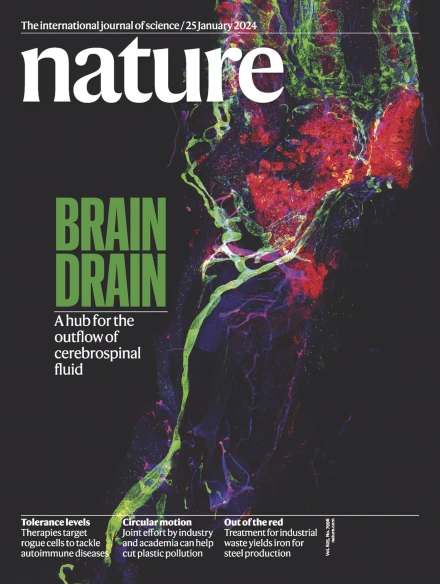差异性1,2-二硼化的模块化芳烃功能化。
IF 48.5
1区 综合性期刊
Q1 MULTIDISCIPLINARY SCIENCES
引用次数: 0
摘要
芳香环,也称为芳烃,含有两个或更多相邻的不同取代基,在小分子药物中无处不在。能够快速将不同的邻取代基引入现成的前体的策略将极大地促进生物活性化合物类似物的产生,然而,迄今为止实现这一目标仍然具有挑战性。现有的制备邻域双功能化芳烃的方法缺乏模块化、区域选择性或通用性。在这里,我们报道了一种镍催化的邻近二硼化方法,该方法可以使用现成的芳基三氟化酯或氯化物作为底物,以区域和位点选择性的方式直接安装两个化学上不同的硼基。该反应在简单温和的条件下进行,并且具有可扩展性。它还表现出广泛的底物范围和优异的官能团耐受性。考虑到每个硼基可以独立转化为不同的官能团,该方法提供了一种模块化、区域选择性和发散性的方法来获取不同的邻近双功能化芳烃,显示了构建模拟库的希望。结合实验和计算机制研究揭示了一个非常不寻常的反应途径,涉及脱芳化宝石二硼基物种的形成和1,2-硼的迁移。该反应的位置选择性和区域选择性是由硼基与镍催化剂的空间相互作用控制的。在这项研究中获得的机制见解可能对开发其他硼介导的功能化反应具有广泛的意义。本文章由计算机程序翻译,如有差异,请以英文原文为准。
Modular arene functionalization by differential 1,2-diborylation.
Aromatic rings, also known as arenes, containing two or more adjacent different substituents are ubiquitously found in small molecule drugs1. Strategies that can rapidly introduce diverse vicinal substituents to readily available precursors would greatly benefit generation of analogues of bioactive compounds2, which, however, remain challenging to realize to date. The existing approaches for preparing vicinal difunctionalized arenes lack modularity, or regioselectivity, or generality. Here we report a nickel-catalyzed vicinal diborylation method that can directly install two chemically differentiated boryl groups in a regio- and site-selective manner using readily available aryl triflates or chlorides as substrates. This reaction operates under simple and mild conditions and is scalable. It also shows a broad substrate scope and excellent functional group tolerance. Given that each boryl group can be independently transformed into various functional groups, this method offers a modular, regioselective, and divergent approach to access diverse vicinal difunctionalized arenes, showing promise for constructing analogue libraries. The combined experimental and computational mechanistic studies reveal a highly unusual reaction pathway, involving the formation of a dearomatized gem-diboryl species and 1,2-boron migration. The site- and regioselectivity of this reaction are proposed to be controlled by steric interactions of the boryl groups with the nickel catalyst. The mechanistic insights gained in this investigation could have broad implications on developing other boron-mediated functionalization reactions.
求助全文
通过发布文献求助,成功后即可免费获取论文全文。
去求助
来源期刊

Nature
综合性期刊-综合性期刊
CiteScore
90.00
自引率
1.20%
发文量
3652
审稿时长
3 months
期刊介绍:
Nature is a prestigious international journal that publishes peer-reviewed research in various scientific and technological fields. The selection of articles is based on criteria such as originality, importance, interdisciplinary relevance, timeliness, accessibility, elegance, and surprising conclusions. In addition to showcasing significant scientific advances, Nature delivers rapid, authoritative, insightful news, and interpretation of current and upcoming trends impacting science, scientists, and the broader public. The journal serves a dual purpose: firstly, to promptly share noteworthy scientific advances and foster discussions among scientists, and secondly, to ensure the swift dissemination of scientific results globally, emphasizing their significance for knowledge, culture, and daily life.
 求助内容:
求助内容: 应助结果提醒方式:
应助结果提醒方式:


